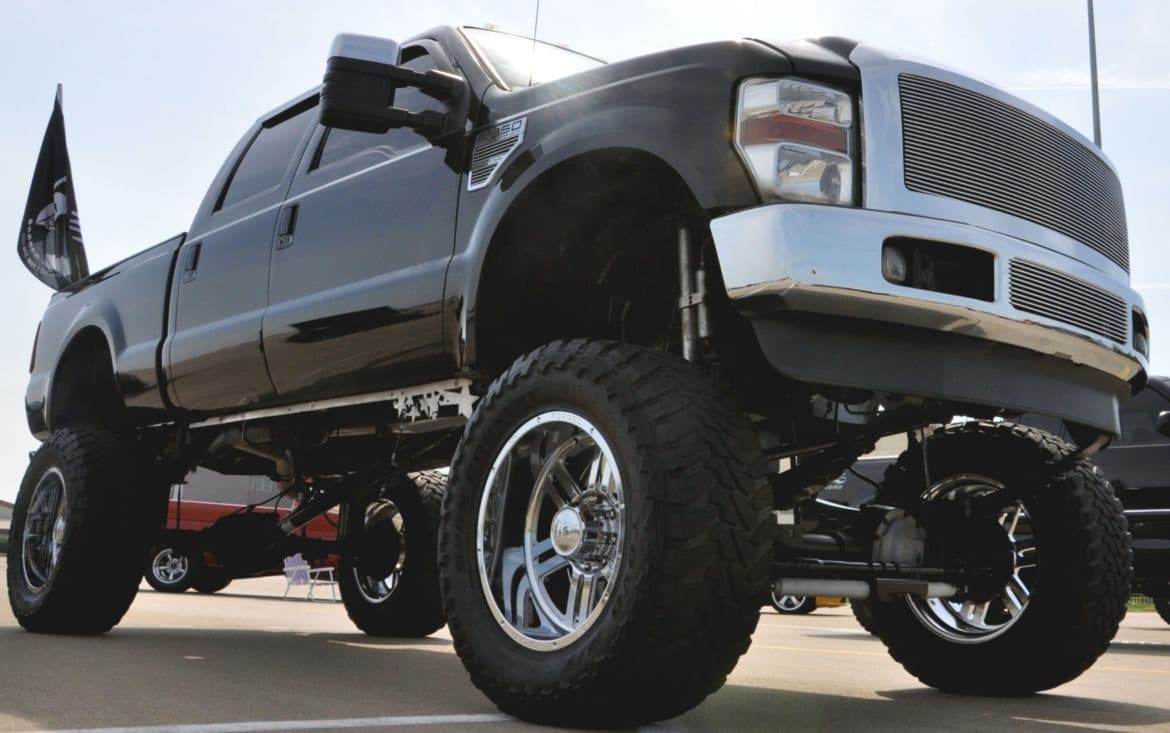Wanting to lift your truck is one of the most sought after mods you can do to your truck. A lift kit can typically raise your truck anywhere from less than one inch to around twelve inches.
When lifting your truck, you need to look at it from a practicality perspective. Yes, a twelve-inch lift would make your truck look great, but if you plan on daily driving your truck, it might not be the greatest experience. Or if your buddy has a six-inch lift, do you need a seven-inch lift? Purchase a kit that fits within your budget, your lifestyle, and your builds goals.
If you are looking to lift your truck to give yourself a presence on the road or have a practical use for it such as getting into remote locations, there’s a lift kit for you. But there’s also a variety of factors you need to consider before installing a lift in your truck.
Lift kit VS leveling kit
The significant difference between a lift kit and a leveling kit is that with a leveling kit, you retain your factory suspension. With a lift kit, you will find yourself replacing suspension parts. When it comes to purchasing a leveling kit, the largest kits are typically three inches. With a lift kit, you can find options up to twelve inches and beyond. A leveling kit also only lifts the front of the truck, where a lift brings both the front and the rear up. Although you may want a lift kit, your wallet may not agree. Leveling kits and significantly cheaper than a lift kit typically ranging from $70 -$200 where with a lift kit, you could be looking into the thousands.
Do I need to get my truck aligned after installing a lift kit
Some lift kits will require you to have your truck realigned. Others will not. Even though some kits say it is not needed, it is strongly recommended whenever you are doing suspension work to have your vehicle realigned.
Will lifting my truck void my warranty
In most cases, lifting your truck will not void your warranty. The only time lifting your truck will void your warranty is if the manufacturer is able to prove your lift kit is the reason for failure. It is still good to check with the manufacturer to ensure everything is above board.
Will I have to re-gear my truck if I install larger tires
When you first lift your truck and install significantly larger tires than stock, you may notice a loss in performance. The reason for this is because when the truck comes from the factory, it is geared for stock components. When you replace stock components, the gears are still at factory specification, meaning they have to work harder to move the truck that now has a lift kit and larger tires. To remedy the performance loss, re-gearing is necessary. Essential what re-gearing is changing the gears of the truck so as if it came off the assembly line with the lift and larger tires.
Typically with most tires below 40 inches, a re-gearing won’t be necessary. However, if you are planning on running tires that are 40 inches or larger, you will notice a significant performance drop, and re-gearing would be advised. If you choose not to re-gear your truck, it could add premature wear to your engine because it has to work much harder.
Will I have to recalibrate my speedometer after installing bigger tires
Yes, installing larger tires on your vehicle will make your speedometer read slower than the truck is going. To get your speedometer to read accurately, you have two options. Most dealerships and garages will be able to adjust the speedometer to give a proper reading for a fee. You could also purchase a calibration tool, such as one of these. When purchasing a calibration tool, ensure to pick one that is compatible with your vehicle.
Is a lift kit legal
This answer varies from state to state and country to country. If you are a united states citizen, you should refer to Liftlaws.Com. For other countries, a google search should cover most of the information needed.
Can you lift an AWD vehicle
Typical lifting all-wheel-drive vehicles is not recommended. The reason for this is they will develop a driveline vibration that there is no remedy for. However, there are exceptions to this, and some drivers have had success in lifting AWD vehicles. Read the forums for your specific vehicle.
Will lifting my vehicle affect ride quality and braking
If you purchase a quality lift kit, you should not notice a difference in ride quality, but you will see a reduction in braking. This happens because your factory brakes are designed to stop a much smaller tire than the aftermarket ones you have installed. To fix this problem, it could be as simple as doing a refresh of the braking system all the way to upgrading to a big brake kit. When you first install your lift, and new tires go for a ride and compare the braking to stock. If you notice a tremendous difference, an upgraded brake kit is a must as it is a safety concern for you are other drivers.
What about a body lift
In the lifted community, body lifts are generally frowned upon. The reason for this is because, with a body lift, you add spacers to separate the body and frame of the truck. When doing this, you significantly raise your center of gravity, making it much easier for you to roll over. It is also possible that the spacers could wear holes through the frame.
What are the disadvantages of a lift kit
Unfortunately, there a few disadvantages of lifting your truck. The most expensive downside is your fuel economy. With larger tires, the weight of the truck increasing and becoming less aerodynamic. Your fuel economy will significantly decrease. If your short or are going to be transporting people with lower mobility getting in and out of the truck can be a challenge. You will also lose some handling, such as not being able to corner as hard. And last but not least, the most substantial inconvenience of a lift truck is… going through the drive-through.

